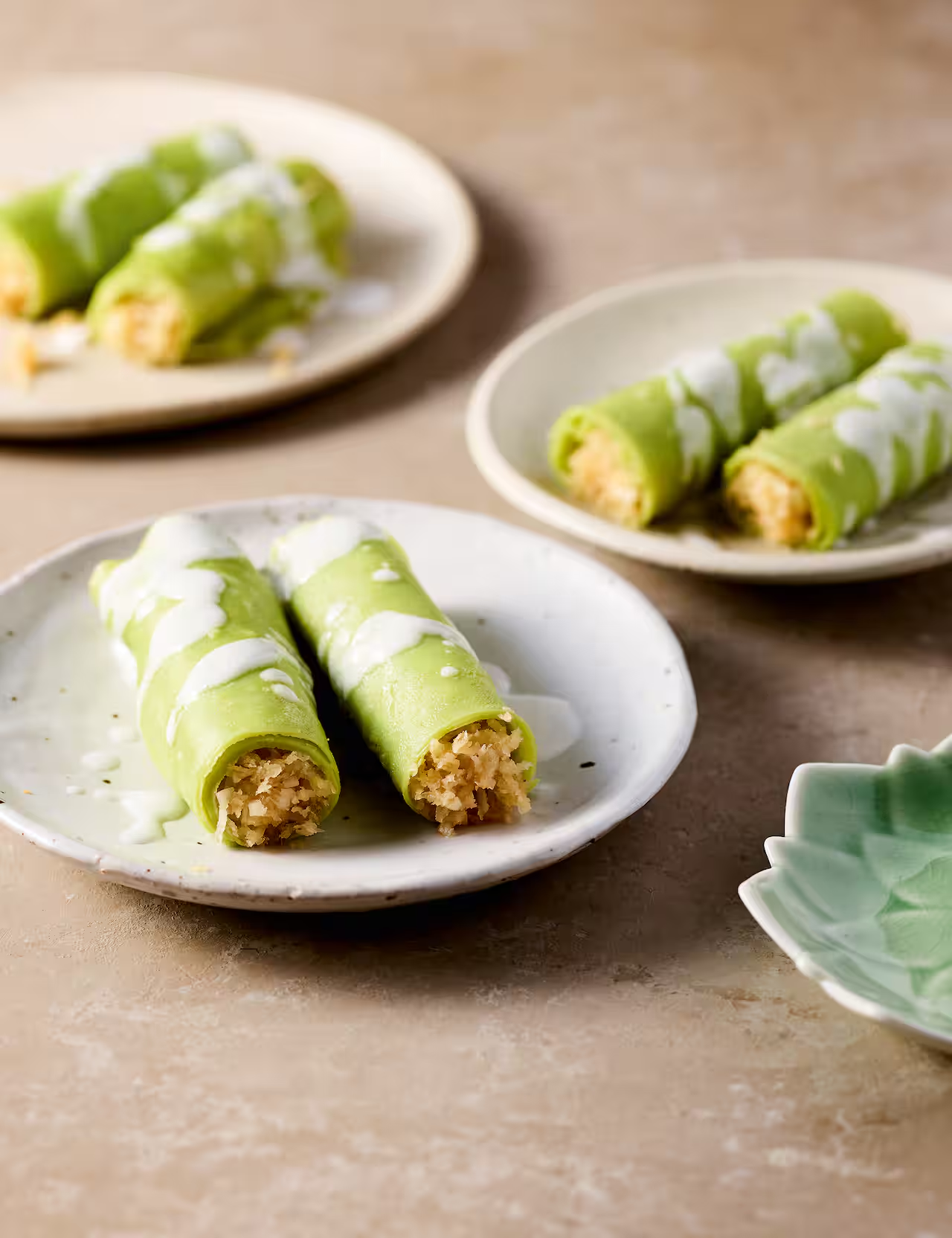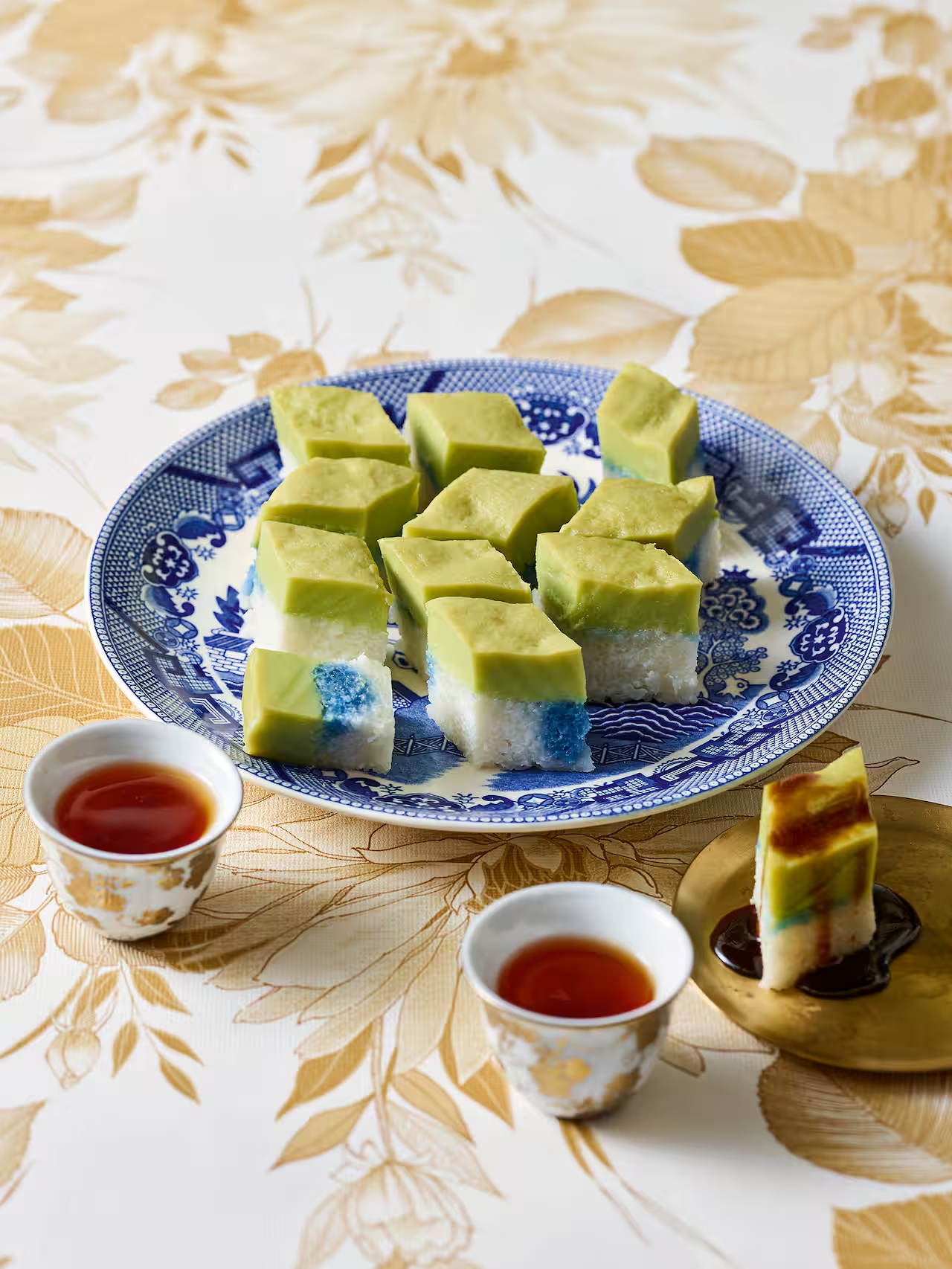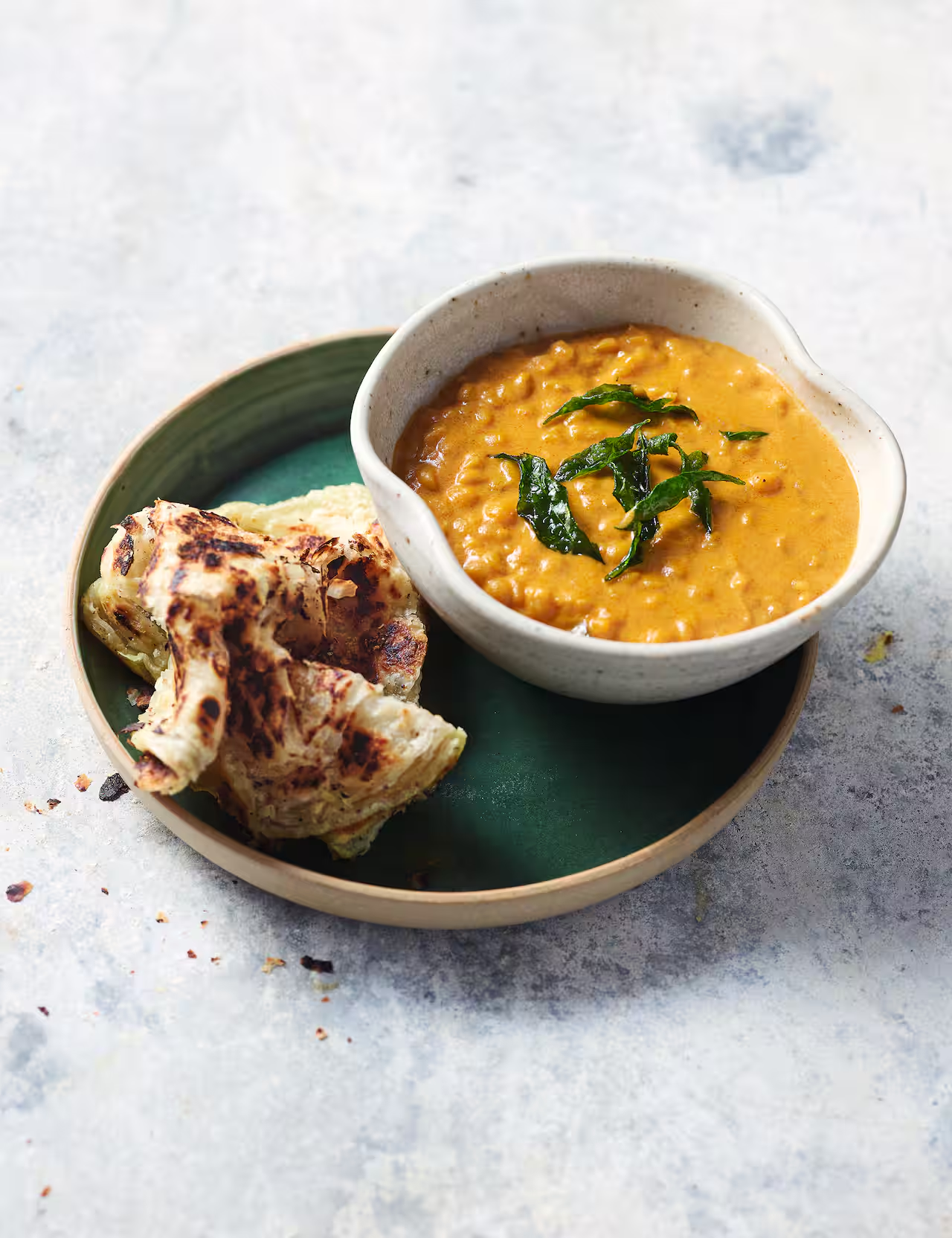Pandan Chiffon Cake by Chef Tony Tan
- My Blue Tea
- Jun 27, 2025
- 5 min read
Pandan Perfection: A Malaysian Nyonya Chef’s Take on the Iconic Chiffon Cake
Celebrate the Art of Pandan with Us!
In honour of our upcoming Pandan MasterClass on Sunday, 3rd August 2025 at Pyrmont Community Centre, Sydney, we’re thrilled to share a special gift with you: Chef Tony Tan’s legendary Pandan Chiffon Cake recipe! 🌿🍰
Join us to unlock more PANDAN secrets, or bake this iconic treat at home—either way, you’re in for a fragrant, fluffy delight.
Want to learn directly from the experts? Secure your spot at the MasterClass today!
CHIFFON CAKE by Chef Tony Tan
Such is the glamour of chiffon cake that it’s hard to believe a century ago it didn’t exist.
Created by American Harry Baker in the 1920s, it quickly swept the US like a gossamer cloud.
But even as its popularity declined, the cake – which has more air than sugar yet
is beautifully rich – caught on in Asia.
I remember eating my first pandan chiffon cake, baked by a friend, in Kuala Lumpur. Laced
with coconut milk and scented with Pandan, it was a revelation. My next encounter with it was one I bought in Melbourne that was lurid green and tasted like cardboard. It was awful.
Finally, my dear friend Chui Lee Luk, the former owner-chef of Claude’s restaurant in Sydney
(and baker of my recent wedding cake!), gave me this stunning recipe. She graciously agreed to let me share it with the world. For this cake to really sing, use fresh pandan leaves (optional Pandan Powder or Pandan Liquid extract). You’ll need a 25 cm (10 inch) chiffon cake tin.

Pandan Chiffon Cake
Ingredients
*18 fresh Pandan leaves, finely shredded
*¾ cup (185 ml) coconut milk, plus
*2 tablespoons extra
*6 egg yolks (about 120 g), plus 10 egg
whites (about 300 g/10½ oz)
*250 g (9 oz) caster (superfine) sugar
*½ cup (125 ml) neutral oil
*180 g (6½ oz) plain (all-purpose) flour
*2 teaspoons baking powder
*½ teaspoon salt
*1 teaspoon cream of tartar
*Whipped cream, to serve (optional)
*Coconut shavings and pure icing
(confectioners’) sugar, to serve
(optional) with MyBlueTea's Pandan Powder
**2 tspn of Pandan Powder
**1 tspn Pandan Liquid extract (optional but recommended for an extra colour)
Pandan crepes with coconut filling, PandanGlutinous rice with coconut custard and Tony's Dhal. Get these recipe from Chef's latest cook book - Photos Credit: Mark Roper / Murdoch Books - Excerpt from SBS Food
Short on Time? No Pandan Leaves? No Problem!
If you don’t have the time or access to fresh pandan leaves, our Pandan Powder and Pandan Liquid Extract are here to save the day! For an extra boost of colour and fragrance, combine both—our Pandan Powder is incredibly aromatic, while the Liquid Extract adds a vibrant touch. Perfect for all your culinary creations! #MyBlueTea #PandanPower #ConvenientCooking #FlavourAndColour
Pandan Chiffon Cake
Method:
(1) Heat oven to 160°C (315°F). Place the shredded Pandan leaves in a blender
with the ¾ cup (185 ml) coconut milk, blend until smooth, then strain
through a fine sieve into a large bowl, discarding solids. Some coconut milk
will be lost in the process; you should end up with ¾ cup (185 ml) total.
(2) Add the egg yolks, 200 g (7 oz) of the sugar and the oil to the coconut
milk and whisk with electric beaters or in a stand mixer fitted with the
whisk attachment for 1 minute or until smooth.
(3) Sift the flour, baking powder and salt together into a separate bowl.
Make a well in the centre, then pour in the coconut milk mixture and beat
until smooth.
(4) Clean and thoroughly dry the beaters (or transfer the batter to another bowl
and clean and dry the stand mixer), then beat the egg whites until frothy.
(5) Add the cream of tartar and continue beating for 10 minutes or until soft
peaks form. Beat in the remaining sugar until dissolved and stiff peaks form.
With a balloon whisk, fold a third of the egg whites into the batter to loosen,
then fold in the remaining egg whites until just combined.
(6) Pour into a chiffon cake tin and run a skewer or knife through the middle
of the cake batter to get rid of any air bubbles.
(7) Bake for 50–55 minutes until a skewer inserted in the middle comes out
clean and the cake springs back when pressed in the centre.
(8) Remove from the oven and invert the tin, placing the upside-down tin
onto the neck of a glass bottle. Leave inverted to cool completely, about an
hour or so.
(9) Once it’s cooled, run a bread knife or long metal spatula around the side of
the tin, pressing against the sides to keep the exterior of the cake attractive.
Remove the centre of the pan, lifting the cake with it, then with a thin, sharp
knife, loosen the core of the cake from the tin, then do the same with the base.
Invert onto a cake platter and serve, either unadorned, or with whipped
cream and showered with coconut shavings and a dusting of icing sugar.
(10) Always fold flour gently but thoroughly and use the correct tin size.
When the cake is unmoulded, wrap cake well to avoid drying. Make sure
There’s no egg yolk in your egg white otherwise it will not whip.

About Chef Tony Tan
(extracted from SBS Food )
Tony Tan's family recipes are a true melting pot of flavour
Growing up on the east coast of Malaysia, Tony Tan's journey of culinary discovery has had many different influences. Here are some delicious recipes from his new cookbook.
Tony Tan says, in his new cookbook, Tony Tan’s Asian Cooking Class, that he hopes it will encourage his readers to be adventurous and experiment with their cooking. It's an attitude he's embraced across his career as a cook, teacher and writer.
The learning started early, surrounded by the vibrant influences of his childhood.
"I grew up in Kuantan, a town on the east coast of Pensinsular Malaysia. Like many towns and cities in Malaysia, Kuantan is a melting pot of cultures," he writes in the introduction to the book. "As the capital of the state of Pahand, it attracted Chinese, Indian and Malay settlers, and they brought with them their cultures and culinary traditions. From my Indian-Tamil neighbours, I learnt how to eat rotis and chapatis. My Malay neighbours taught me how to cook beef rendang and all sorts of kuihs – sweet or savoury snacks."
Tony Tan’s Asian Cooking Class by Tony Tan, photographed by Mark Roper and published by Murdoch Books
Pre order Chef's Cook book
Events with Chef Tony Tan:-







Comments